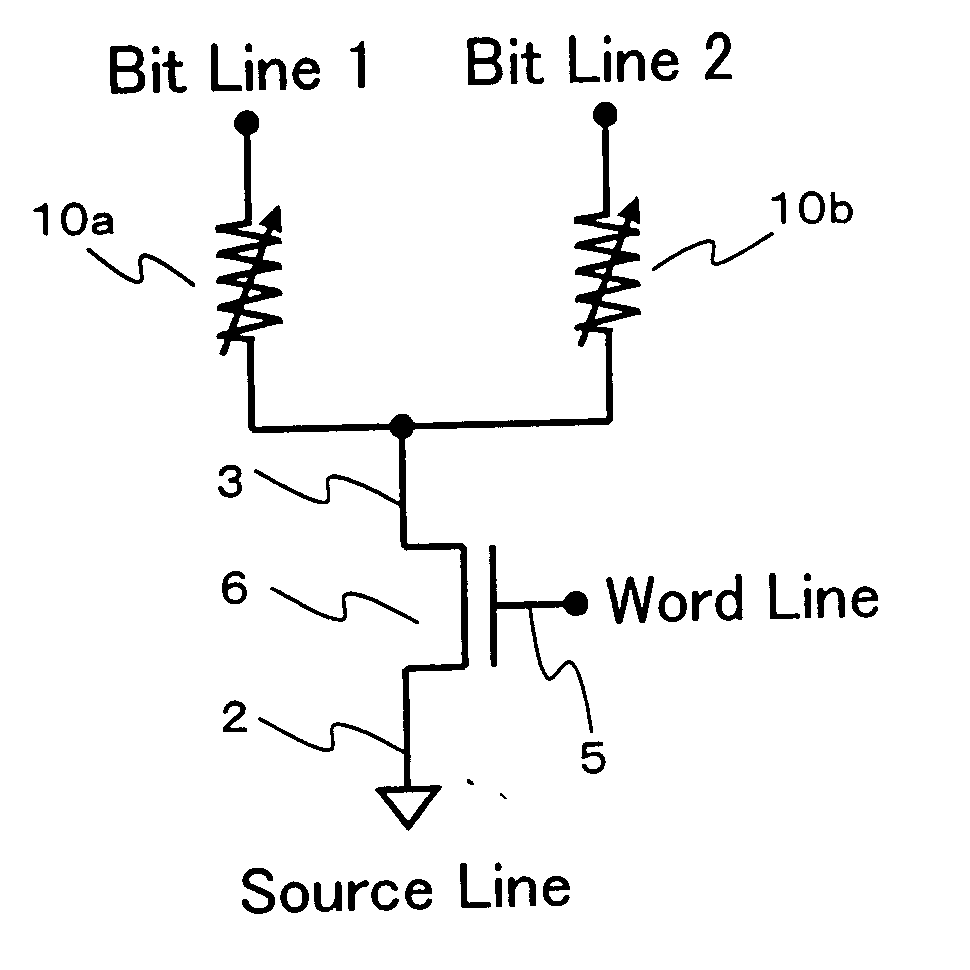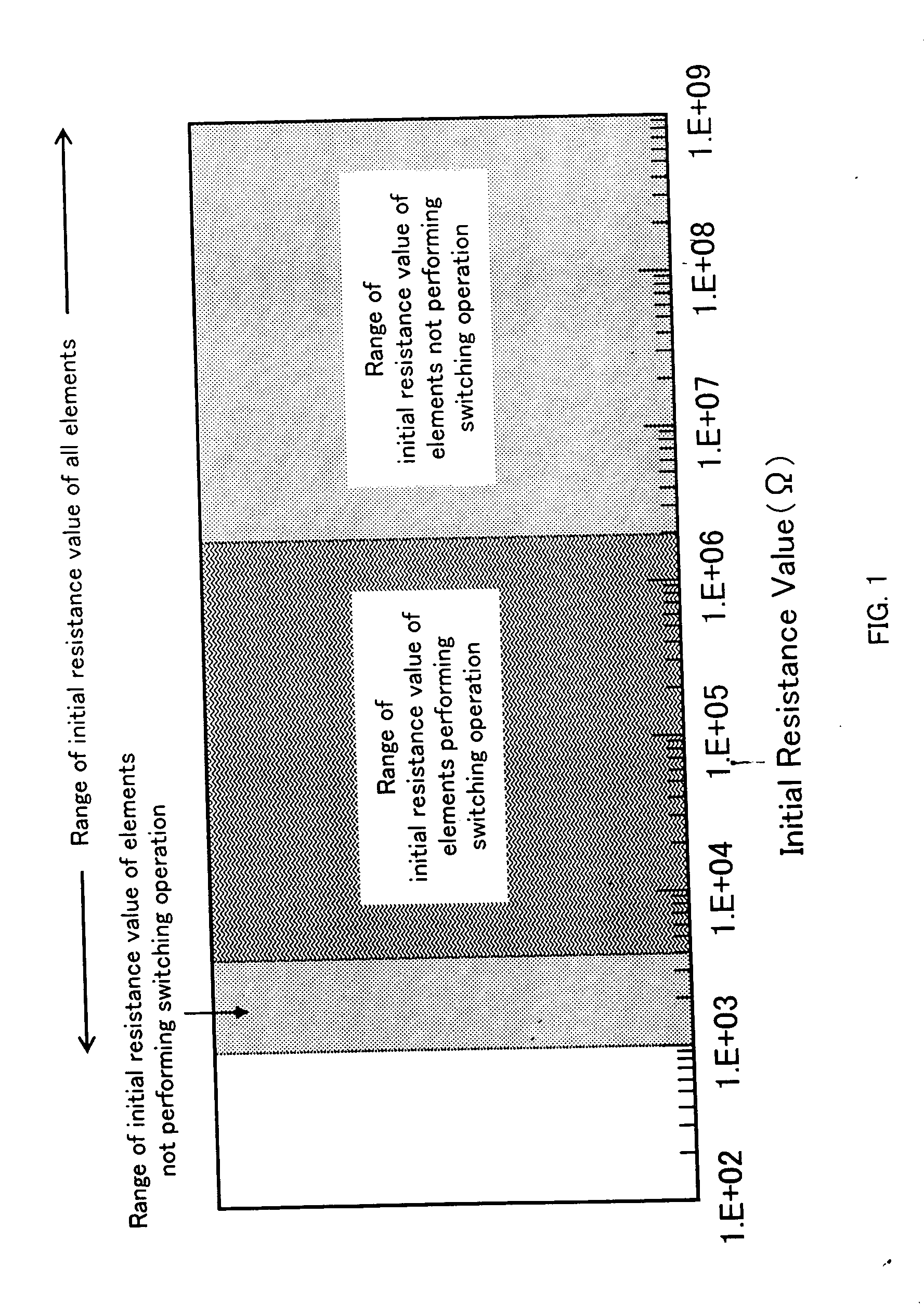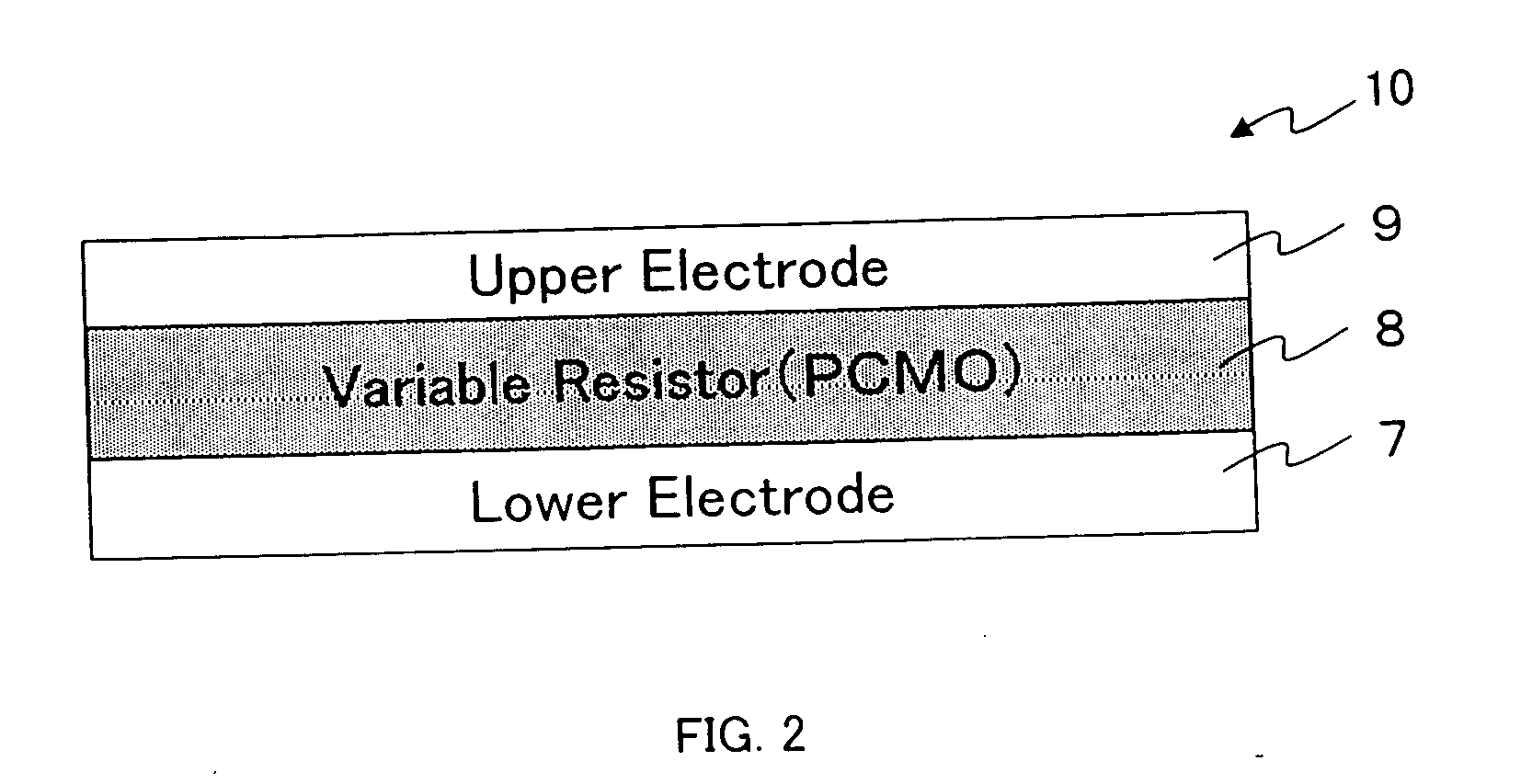Nonvolatile semiconductor memory device
a semiconductor and memory device technology, applied in semiconductor devices, digital storage, instruments, etc., can solve the problems of high consumption power, difficulty in miniaturization, miniaturization and high speed operation
- Summary
- Abstract
- Description
- Claims
- Application Information
AI Technical Summary
Benefits of technology
Problems solved by technology
Method used
Image
Examples
Embodiment Construction
[0033] One embodiment of a nonvolatile semiconductor memory device according to the present invention (hereinafter, appropriately referred to as “inventive device”) is described below with reference to the drawings.
[0034]FIG. 2 is a cross sectional diagram showing the basic structure of a variable resistive element 10 which is a nonvolatile memory element used in an inventive device 100. The basic element structure of variable resistive element 10 is a layered structure where a lower electrode 7, a variable resistor 8 made of a perovskite-type metal oxide film, and an upper electrode 9 are layered in sequence.
[0035] As for the perovskite-type metal oxide that is used as the variable resistor 8, a great number of examples such as Pr1-xCaxMnO3 (PCMO), Pr1-x(Ca,Sr)xMnO3, Nd0.5Sr0.5MnO3, La1-xCaxMnO3, La1-xSrxMnO3 and Gd0.7Ca0.3BaCo2O5+5 are known. Among these, Pr1-xCaxMnO3-based materials, which have a large distortion in the network of the transition metal-oxide bonding and where a ...
PUM
 Login to View More
Login to View More Abstract
Description
Claims
Application Information
 Login to View More
Login to View More - R&D
- Intellectual Property
- Life Sciences
- Materials
- Tech Scout
- Unparalleled Data Quality
- Higher Quality Content
- 60% Fewer Hallucinations
Browse by: Latest US Patents, China's latest patents, Technical Efficacy Thesaurus, Application Domain, Technology Topic, Popular Technical Reports.
© 2025 PatSnap. All rights reserved.Legal|Privacy policy|Modern Slavery Act Transparency Statement|Sitemap|About US| Contact US: help@patsnap.com



